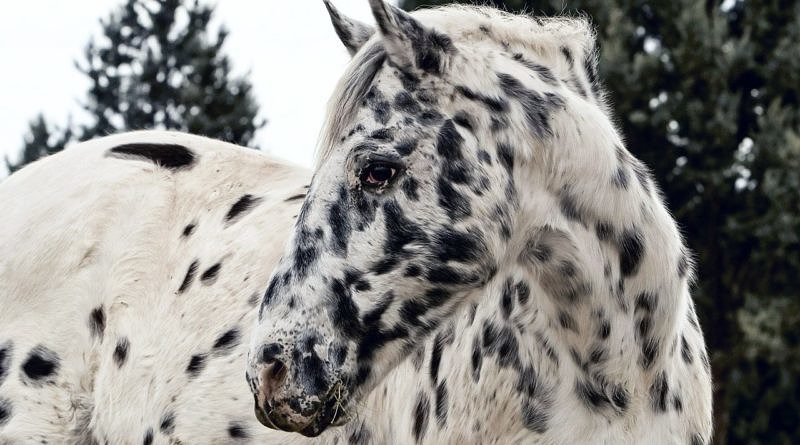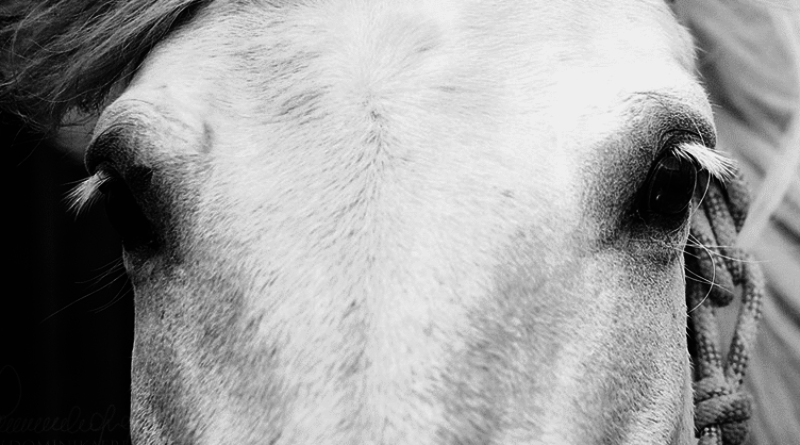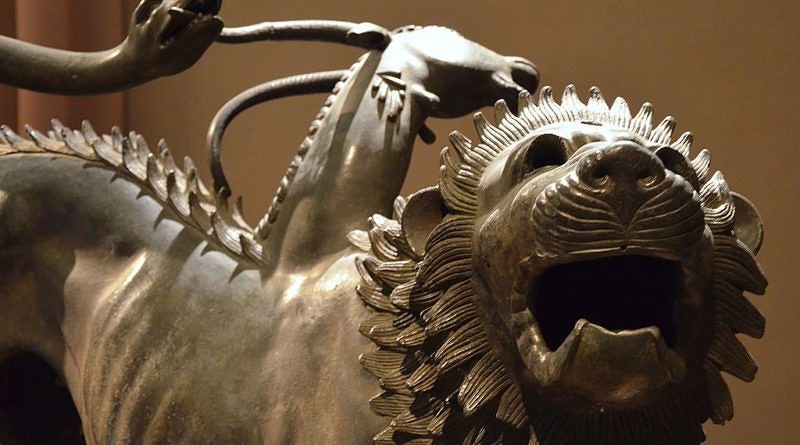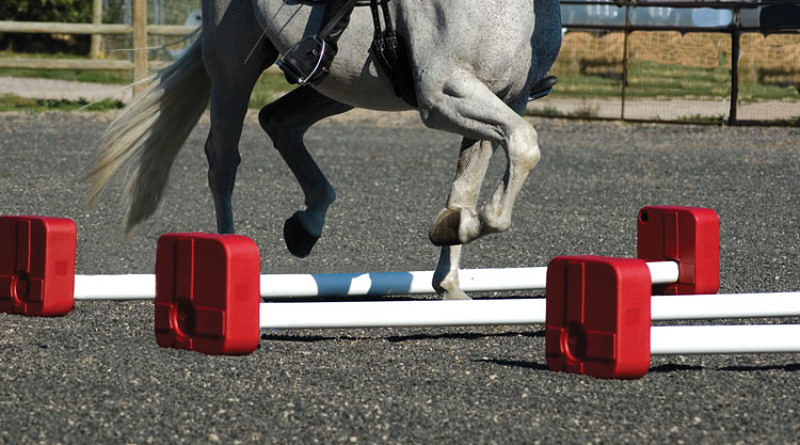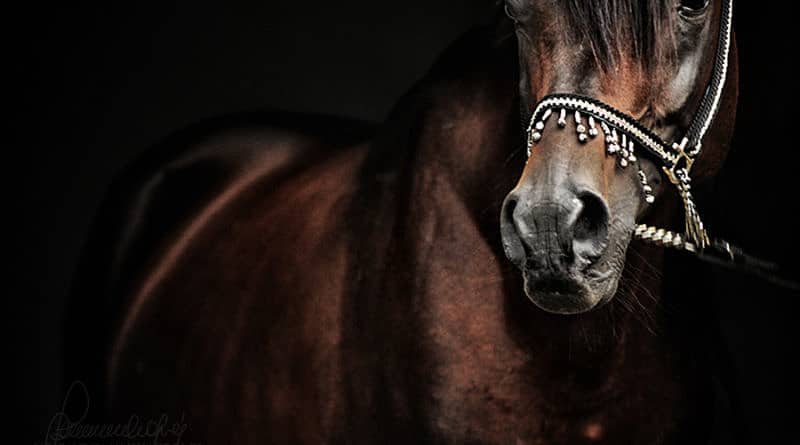Introduction to: Appaloosa Patterns & Genetics
The human fascination with spotted horses goes back thousands of years. What causes these striking markings, and are you familiar with their many forms?
What is an “appaloosa pattern”?
The appaloosa patterns are named after the Appaloosa breed of horse, which in turn probably gets its name from a North-American river. However, the patterns actually far predate horses being brought to the Americas and the development of the Appaloosa breed. Spotted horses have existed since before domestication and were falling in and out of favour in Europe for centuries before any stepped hoof across the proverbial pond. Though the American Appaloosa is probably the most high-profile breed that occurs in these patterns, there are in fact many more breeds the world-over that also carry these patterns such as the European Knabstrupper and Noriker.
To distinguish the Appaloosa breed from the appaloosa patterns, we might use the name of the genetic complex responsible for these patterns instead: the leopard complex. However, for the purposes of this introductory article, I will stick to the more familiar “appaloosa pattern” terminology.
What do these patterns look like?
The most familiar and characteristic of the appaloosa patterns is probably the full leopard pattern which gives the leopard complex its name.
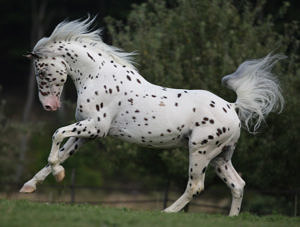
But appaloosa patterned horses include those with some very different phenotypes from very minimal to an all-white appearance.
Certain characteristics will give away most appaloosa patterned horses. These include mottling around the eyes, muzzle, inner ears and genitals. And in some cases striped hooves or very pale hooves where there is otherwise no white marking. A white sclera (the ‘white’ of the eye surrounding the iris which is normally dark in horses) is also characteristic of these patterns.
But just because a horse has striped hooves or a white sclera, does not mean it is definitely a horse with an appaloosa pattern! The whole picture – and other relevant information such as breed and ancestry – must also be considered before making any determinations.
It’s not about the spots!
A lot of people get confused by these patterns because they think of them as being about the spots. In fact, spots are a side-effect of the absence of white.
Appaloosa patterns are simply a type of white pattern. The dark spots on a full leopard are not spots on white but holes in the white, revealing the horse’s coat colour ‘underneath’. So for instance a genetically black horse will have black ‘spots’ and a palomino will have yellowish ‘spots’.
The genetics
Two genes are currently identified as being involved in the formation of appaloosa patterns: a gene that controls the presence or absence of any appaloosa characteristics and a gene that modifies the appearance of the pattern.
First of all we have the Leopard Complex LP allele. It can be thought of as a dominant on-off switch for all appaloosa patterns. If there is no LP allele present, the horse will not show any appaloosa characteristics – it will look like a normal ‘solid’ horse of whatever colour its genetics otherwise dictate.

So for instance, this bay horse does not carry an LP allele. And the same can be said of the bay and white horse below, which carries a different white pattern (tobiano) but is genetically non-leopard.
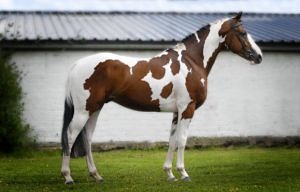
If a horse has at least one LP allele, it will display at least some appaloosa characteristics. The extent of these characteristics will be determined by a combination of two factors: the number of LP alleles (LPLP or LPlp) and the presence of modifying alleles.
Varnish Roan
When a horse carries at least one LP allele but no pattern modifiers, we get the most basic possible appaloosa pattern. This is called “varnish roan”.
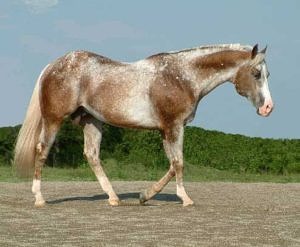
Varnish roans typically begin life with either a very small amount of white roaning in the region of their hindquarters and/or face or no white at all. With age, this white roaning spreads, producing an effect that is sometimes confused with greying or true roan.
But this varnish roan pattern doesn’t produce the same high-contrast phenotype people normally picture when talking about appaloosa patterns. To get those, modifiers must get involved.
PATN1
Only one modifier has currently been identified and that is the PATN1 allele. PATN1 has been associated with the full leopard and few spot phenotypes but other modifiers are believed to be responsible for less expansive spotted blankets and snowcaps.
As you can see from these examples, the pattern modifiers seem to influence the extent of a solid white blanket over the horse’s entire body – but they are not responsible for the presence (or absence) of spots.
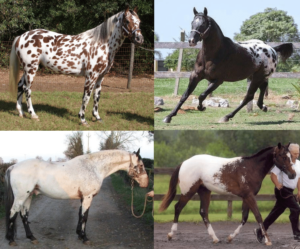
So when do we get spots?
As we discussed earlier, appaloosa patterns are a type of white pattern and the presence or absence of spots is simply the consequence of how many holes are in that white. Keeping this in mind, it might be easier to remember that a double dose of LP produces more white and therefore fewer spots than a single dose. So while a heterozygous horse will have lots of gaps in the white and therefore appear spotted, a homozygous horse will have a lot more white and therefore many fewer holes.
The two charts below show the variation in blanket sizes that a heterozygous or homozygous LP horse with pattern modifiers can show. Some horses will have next to no blanket and some will have a marking that covers their entire body. Exactly what determines this beyond the PATN1 allele is currently a mystery.

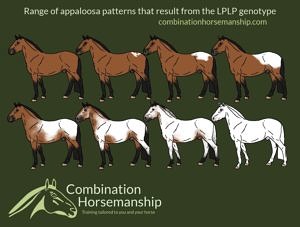
The charts above deliberately do not show varnishing which changes year on year but in each of these cases the horse will also show varnish roan characteristics and “varnish out” to varying degrees with age. An example of this can be seen in the photo below.

This horse is not greying as some might first assume but rather started life with a spotted blanket and has ‘varnished out’ with age. The darker spots – the gaps in the blanket – will not varnish out.
Many other factors also influence the phenotype of an appaloosa patterned horse such as the horse’s base colour, other non-appaloosa white pattern alleles, and greying. This introductory article is intended only as a rough guide to understand the basics of appaloosa patterns. In a future article I will discuss how these patterns are affected by different factors and delve deeper into the sometimes confusing world of appaloosa pattern genetics.

